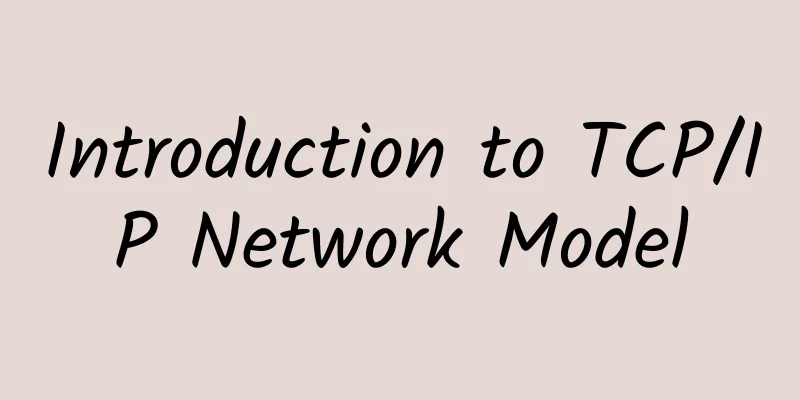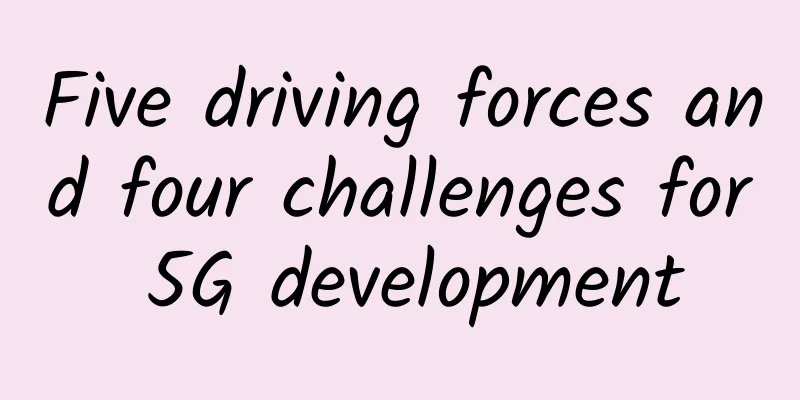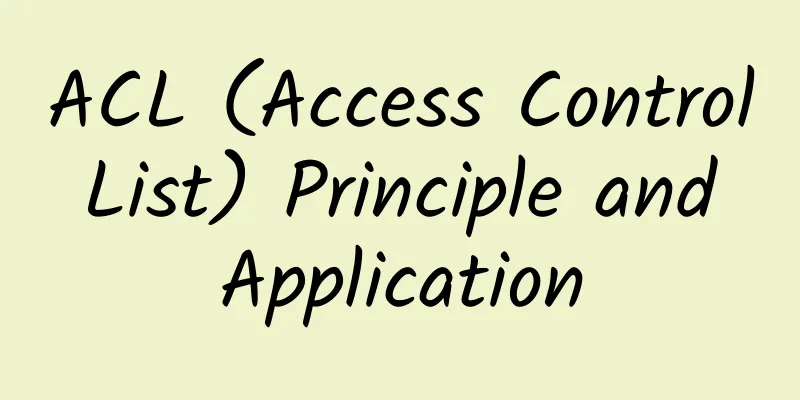Introduction to TCP/IP Network Model

|
TCP/IP Network Model The TCP/IP model is the foundation of the Internet. It is the general name for a series of network protocols. These protocols can be divided into four layers: link layer, network layer, transport layer, and application layer.
In the network architecture, the establishment of network communication must be carried out at the peer layer of the communicating parties and cannot be staggered. During the entire data transmission process, the data at the sending end must be attached with the protocol header and protocol tail of the corresponding layer (only the data link layer needs to encapsulate the protocol tail) when passing through each layer, that is, the data must be encapsulated by protocol to identify the communication protocol used by the corresponding layer. OSI seven-layer model Of course, in theory, there is also an OSI seven-layer model: physical layer, data link layer, network layer, transport layer, session layer, presentation layer and application layer. This is an ideal model, but it is not widely adopted due to its complexity. Link Layer (1) Ethernet and 802 encapsulation Ethernet encapsulation is defined in RFC894, while 802 encapsulation is defined in RFC1042. Host requirements RFC requirements: (1) MUST support Ethernet encapsulation (2) SHOULD support RFC1042 encapsulation mixed with RFC894 (3) MAY be able to send RFC1042 encapsulated packets (2) SLIP Applicable to RS-232 and high-speed modem access networks (1) Ends with 0xC0 (2) Escapes 0xC0 and ESC characters in the message Disadvantages: No way to notify the local IP to the other end; no type field; no checksum (3) CSLIP Compress the 20-byte IP header and 20-byte TCP header in the SLIP message into 3 or 5 bytes (4) PPP The defects of the SLIP protocol have been corrected to support multiple protocol types; with data checksum; message header compression; both parties can dynamically negotiate IP addresses (using the IP protocol); the link control protocol can set multiple link options. (5) Loopback interface Used for programs on the same host to communicate via TCP/IP. All data sent to the loopback interface is used as input; data sent to the host IP address is also sent to the loopback interface; broadcast and multicast data are first copied to the loopback interface and then sent to the Ethernet. (6) MTU The maximum limit on the data frame length. If the data packet length is greater than this value, it needs to be fragmented at the IP layer. Note: The data sent to Ethernet must take the path MTU into consideration Internet Protocol (IP) IP is the core protocol in TCP/IP. All TCP, UDP, ICMP and other protocols are transmitted in the format of IP datagrams. The IP protocol provides unreliable and connectionless services. It does not guarantee that datagrams can be delivered to the destination, nor does it guarantee the order of datagrams. The IP header format is: Note: Network byte order: The order of 32-bit transmission is 0-7bit, 8-15bit, 16-23bit, 24-31bit (i.e. big endian byte order) IP Routing IP routing is done hop by hop. IP does not know the complete path to any destination (except, of course, those directly connected to the host). All IP routing does is provide the IP address of the next-hop router for datagram transmission. It assumes that the next-hop router is closer to the destination than the host sending the datagram, and that the next-hop router is directly connected to the host. IP routing mainly completes the following functions:
If none of the above steps succeed, the datagram cannot be delivered. If the datagram that cannot be delivered comes from the local machine, a "host unreachable" or "network unreachable" error is generally returned to the application that generated the datagram. IP routing is done hop by hop. The destination IP address of a datagram remains the same as it travels from one station to another, but the encapsulation and destination link layer addresses can change at each station. Most hosts and many routers use the default next-hop router for datagrams destined for non-local networks. Two characteristics of IP routing: (1) Full host address matching is performed before network address matching (2) Routes are specified for the network, not for each host. IP address and MAC address classification By IP address range:
According to the communication mode:
Unicast is the transmission of data to a specific host. For example, when sending an IP data packet to a host, the link layer header has a very specific destination address. For Ethernet, it is the MAC address of the network card. Broadcast and multicast are only applied to UDP. They are very important for applications that need to send messages to multiple receivers at the same time.
Subnet Mask The subnet mask is used to determine how many bits are used for the network ID and how many bits are used for the host ID. Given an IP address and subnet mask, a host can determine the destination of an IP datagram: (1) a host on this subnet; (2) a host on another subnet in this network; or (3) a host on another network. If you know the IP address of the machine, you will know whether it is a class A, B or C address (you can know it from the high bits of the IP address), and you will know the dividing line between the network number and the subnet number. The dividing line between the subnet number and the host number can be known based on the subnet mask. Encapsulation The physical characteristic of Ethernet data frames is that their length must be between 46 and 1500 bytes, and the data frames will be encapsulated when entering each layer of the protocol stack. The more specific Ethernet frame format is: Use When the destination host receives an Ethernet frame, it moves up the protocol stack from the bottom to the top, removing the message headers added by each layer of protocol. Each layer of protocol box checks the protocol identifier in the message header to determine the upper layer protocol of the received data. This process is called demultiplexing. Fragmentation Old kernels usually handle IP fragmentation at the IP layer, which can receive 0~64KB of data. Therefore, when the data IP packet is larger than the PMTU, the data must be divided into multiple IP fragments. In newer kernels, L4 will try to fragment: L4 will no longer pass the buffer that exceeds the PMTU directly to the IP layer, but will pass a set of buffers that match the PMTU. In this way, the IP layer only needs to add an IP header to each fragment. But this does not mean that the IP layer does not do the work of fragmentation. In some cases, the IP layer will still perform fragmentation.
In the *** table:
In the second table:
It should be noted that only the first packet carries the complete IPv4 + TCP/UDP information of the original packet, and subsequent subpackets only have IPv4 information. Problems caused by subcontracting:
MTU The MTU of a network interface is the maximum size of a block of data that it can transmit at one time. Any data block that exceeds the MTU will be divided into smaller transmission units before transmission. MTU is measured at two levels: the network layer and the link layer. For example, the standard Internet MTU at the network layer is 1500 bytes, and at the link layer it is 1518 bytes. When not specifically mentioned, the MTU of the network layer is usually referred to. A common reason to increase a network interface's MTU is to increase throughput on high-speed Internet. The standard Internet MTU uses 1500 bytes for backward compatibility with 10M and 100M networks, but it is far from enough for current 1G and 10G networks. New network equipment can handle larger MTUs, but the MTU needs to be set explicitly. Frames with this larger MTU are called "jumbo frames", and 9000 bytes are common. Conversely, some reasons why you might want to reduce the MTU:
MTU cannot be mixed with any current Internet network protocol, however, a router can be used to connect network segments with different MTUs. TCP fragmentation The size of each TCP data packet (segment) is limited by the MSS (TCP_MAXSEG option). The maximum segment size (MSS) indicates the length of the first block of data that TCP transmits to the other end. When a connection is established (SYN packet), both parties of the connection must notify their respective MSS. Generally speaking, if no fragmentation occurs, the larger the MSS, the better. Larger segments allow more data to be carried in each segment, which results in higher network utilization relative to the IP and TCP headers. When TCP sends a SYN, either because a local application wants to initiate a connection or because the host at the other end receives a connection request, it can set the MSS value to the MTU length on the outgoing interface minus the fixed IP header (20 bytes) and TCP header length (20 bytes). For an Ethernet, the MSS value can be up to 1460 bytes (see tcp_sendmsg for details). TCP/SCTP will slice the data according to MTU, and then the work of layer 3 only needs to add the IP header to the passed slices (that is, when this function is called, layer 4 has actually sliced the data). Segmentation offload Now many network cards support data fragmentation. In this way, the upper layer L4/L3 does not need to be fragmented (maximum 64KB), but is completed by the NIC, thereby improving network performance.
PMTU (Path Maximum Transmission Unit Discovery) The purpose of PMTU is to dynamically determine the minimum MTU on the entire path from the sender to the receiver, thereby avoiding packet fragmentation. Note that PMTU only supports TCP and is invalid for other protocols such as UDP. In addition, if the sender has enabled PMTU, the DF flag of all TCP/IP packets it sends is set to 1, which means that packet fragmentation is no longer allowed. When a router on the network path finds that the sender's packet cannot be sent because it exceeds the MTU of the previous forwarding path, it returns an ICMP "Destination Unreachable" message to the sender, which contains the MTU. The sender then saves the MTU value in its routing table and resends a new smaller packet using a smaller MTU. Example 1: Exceeding MTU, DF = 0 => Router splits and sends, receiving host reassembles Example 2: Exceeded, DF = 1 => PMTU, the sender resends in a small packet |
>>: 10 IT skills that are getting paid the most today
Recommend
5G bearer technologies have their own advantages, but optical fiber transmission is still a mystery
Recently, China Telecom released the "5G Era...
Akamai Li Wentao: Starting from four major strategies, helping enterprises build a new paradigm for public cloud
In today's digital age, cloud computing has b...
Let's talk about 11 main neural network structures
With the rapid development of deep learning, a wh...
The number of Internet users in my country has reached 1.011 billion, and the Internet penetration rate has reached 71.6%.
According to the website of China Internet Networ...
Four experiments to thoroughly understand the disconnection of TCP connections
[[431016]] Preface Seeing this title, you may say...
Xuzhou Tongshan District: Millions of people fall in love with "Government Cloud"
[[188582]] In an environment where everyone is &q...
5G is the new infrastructure, but it also faces practical problems
Labs Guide When we browse Moments and watch video...
Ministry of Industry and Information Technology: The total number of 5G base stations in my country has reached 819,000
Recently, the Ministry of Industry and Informatio...
How is HostYun? Simple test of HostYun Hong Kong EPYC high bandwidth VPS
A few days ago, we shared the information that Ho...
RAKsmart: High-security servers from $79/month, cluster servers from $142/month, data centers in the United States/Japan/Korea, etc.
Earlier this month, we shared information about R...
5G improves network determinism and supports digital transformation
[[326206]] Operators see enterprise and industria...
5G means data center platforms must evolve
The foundation for seamless 5G implementation 5G ...
I secretly monitored their communication traffic...
I am a monitoring software. My master spent sever...
The 5G infrastructure dividend ignored in the Internet Queen's report
Since 1995, Mary Meeker, known as the "Queen...
LOCVPS 20% off, Hong Kong Cloud/Confederation VPS bandwidth upgrades at no additional cost
LOCVPS released the promotion information for Jul...









